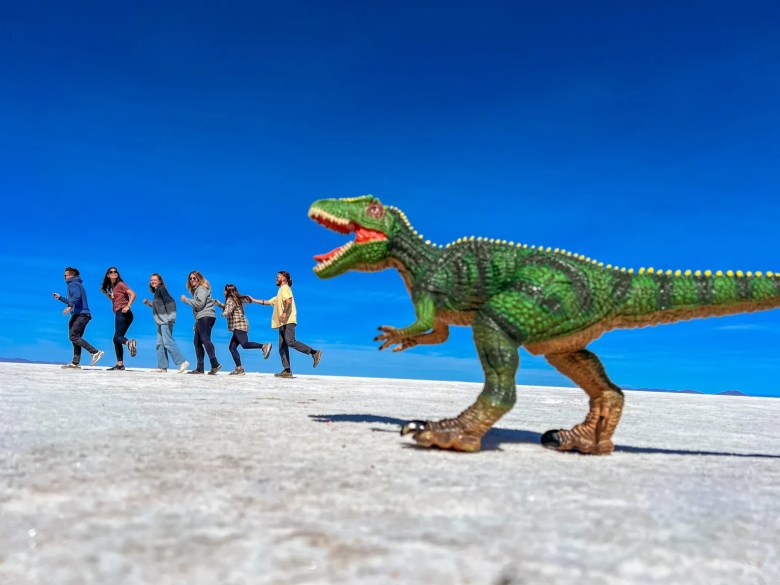
Introduction Of Bolivia
Bolivia is a hidden gem when it comes to natural beauty, often overshadowed by neighboring Peru. However, if you’re planning a trip to Bolivia, one of the country’s must-see destinations is the Salar de Uyuni, the world’s largest salt flat. This article will walk you through everything you need to know before embarking on an unforgettable journey to this stunning landscape, and why a longer tour is worth your while.

Table of Contents
What is Salar de Uyuni?
Salar de Uyuni is located in the Potosí region of southwest Bolivia and spans over 10,000 square kilometers (3,900 square miles). It’s an otherworldly landscape of dazzling white salt that stretches as far as the eye can see, a remnant of a prehistoric lake that evaporated long ago. This natural wonder is a bucket-list destination for many travelers, especially for its surreal reflective surface during the rainy season.
Tours: One-Day vs. Multi-Day
While many people book a one-day tour just to see the salt flats, a multi-day tour is highly recommended. The three- or four-day tours not only cover Salar de Uyuni but also explore the surrounding region, which is rich in diverse and breathtaking landscapes.
These extended tours take you through:
- Snow-capped mountains
- Red and green lagoons filled with flamingos
- Natural hot springs
- Volcanic geysers
- Desert landscapes and surreal rock formations
You’ll also witness stunning sunrises and sunsets over the desert, making for unforgettable experiences that far surpass a simple visit to the salt flats. Plus, the nights in these remote locations offer some of the clearest and most spectacular stargazing opportunities you’ll ever see.
How the Tours Work
- Starting points: You can start your tour from the towns of Uyuni (Bolivia), La Paz (Bolivia’s capital), or San Pedro de Atacama in Chile.
- Vehicles: The tours are conducted in 4×4 vehicles like Toyota Land Cruisers or Nissan Patrols. You’ll typically share the car with five to six travelers, plus the driver.
- Tour duration: Three or four days is ideal to fully appreciate the region.
- Driving time: Be prepared to spend a lot of time in the car, but the incredible views make it worth it.
If you can, try to organize a group of friends or fellow travelers to go with. Since you’ll be spending most of the trip in close quarters, having a fun group can make a huge difference. Alternatively, flying solo can work well too—many people meet like-minded travelers along the way, as I did at a hostel in La Paz.
Tour Pricing and Inclusions
A three-day tour typically costs around 700–1100 Bolivianos (about $100–160 USD), depending on whether you choose a Spanish or English-speaking guide. Here’s a breakdown of costs:
- Three-day tour with an English-speaking guide: Expect to pay up to 1100 Bolivianos ($160 USD).
- Three-day tour with a Spanish-speaking guide: Prices are generally lower, around 700 Bolivianos ($100 USD).
These prices generally include:
- Transportation in a 4×4
- Meals
- Accommodation in salt hotels (yes, hotels made entirely of salt!)
- Sleeping bags (if needed)
What’s not included are:
- Snacks and alcohol (bring some treats and a bottle of wine if you like)
- National park entry fees (budget around 200 Bolivianos/$30 USD)
Choosing Between a Spanish or English-Speaking Guide
If no one in your group speaks Spanish, it’s well worth the extra cost for an English-speaking driver. Not understanding your guide can diminish the experience, as you’ll miss important information and fun facts about the places you visit.
Highlights of a Multi-Day Tour
- Salar de Uyuni: The main attraction. While vast and stunning, it’s often the other sights that steal the show.
- Laguna Colorada (Red Lagoon): A surreal red-colored lagoon, home to hundreds of flamingos.
- Laguna Verde (Green Lagoon): Set against a backdrop of towering volcanoes, this green-hued lagoon is one of the most photogenic spots in the region.
- Sol de Mañana Geysers: Witness active geysers and bubbling mud pools at high altitude.
- Hot Springs: A perfect way to relax after a long day of driving. Soak in warm, mineral-rich waters while gazing at the surrounding mountains.
Best Time to Visit
- Dry Season (May to November): This is the best time for clear skies and easy access to all locations, especially for stargazing and capturing the vast salt flats in all their glory.
- Wet Season (December to April): During this period, the salt flats turn into a giant mirror, reflecting the sky. While it’s a spectacular sight, some areas may be inaccessible due to flooding, and travel can be slower.
Final Tips for Your Tour
- Altitude: Salar de Uyuni sits at an altitude of around 3,656 meters (12,000 feet), so give yourself a couple of days to acclimatize before the tour to avoid altitude sickness.
- What to bring: Warm clothing (it gets very cold at night), sunscreen, sunglasses (the salt flats are blindingly bright), and plenty of snacks for long car journeys.
- Group dynamics: As mentioned, the group you travel with can make or break the trip. If possible, plan ahead with friends or make connections with fellow travelers beforehand.
Conclusion
While the Salar de Uyuni itself is an iconic destination, it’s just the start of what this incredible region has to offer. Opting for a multi-day tour will expose you to the true diversity and beauty of Bolivia, from flamingo-filled lagoons to rugged volcanic landscapes. It’s a country that deserves more recognition for its natural wonders—and a visit to the Uyuni Salt Flats is a great place to start!





